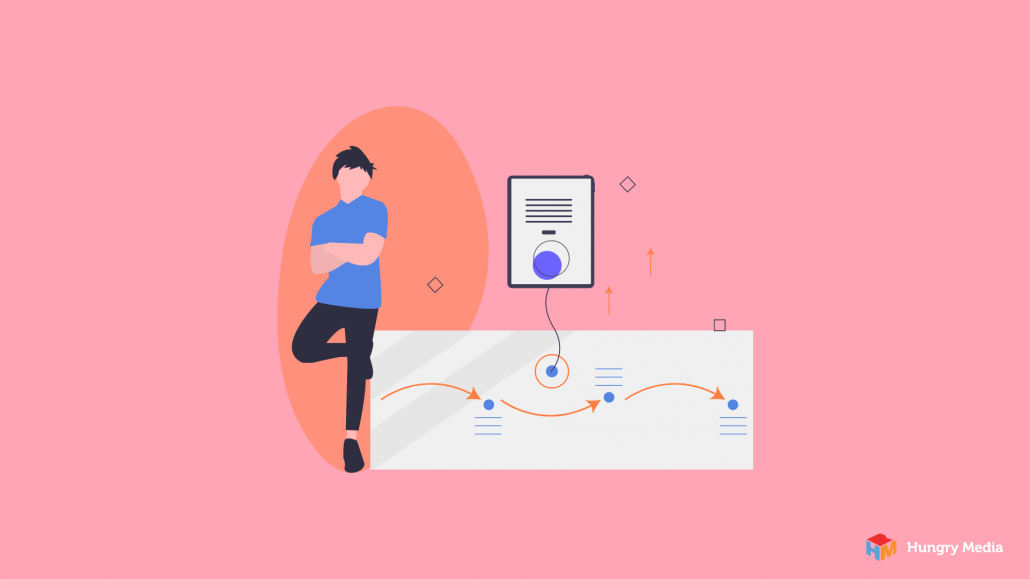
Websites serve a variety of purposes, but one thing’s almost always true about a website. It exists as a means to improve the bottom line of the company it represents. In this sense, websites are a key component in the sales funnel.
Regardless of whether the focus of your site is to make sales, collect contact details, or disseminate information to your users, you want it to be effective, right? Otherwise, what’s the point of paying for it? Enter: Conversion Rate Optimization (CRO). What is CRO, you ask? Read on for a crash course.
Website Conversion Defined
In terms of internet marketing, there are two main ways you can improve the performance of your website. You can drive more traffic to it, and you can better leverage the traffic you already have. The former is the focus of SEO. The latter is what we mean by Conversion Rate Optimization (CRO).
What is a Website Conversion?
A website conversion is when a user takes a predetermined, desired action on your website. Each step that moves a user through the sales funnel is considered a conversion, meaning they are that much closer to becoming a customer. Examples of these actions include filling out a form, sharing a blog post, or making a purchase.
What is a Conversion Rate?
Your conversion rate is the percentage of users who take one of the pre-determined, desired actions.
What is a Good Conversion Rate?
One of the best responses we’ve read says a good conversion rate is one that’s better than it is now. It’s a fair answer, as it essentially states that the goal is to constantly improve conversion rates. And honestly this might be the best answer, as there are several factors that impact CRO metrics including your industry, traffic source, price point, and type of conversion, just to name a few.
For a point of reference, according to Invespcro.com, an average conversion rate is 2.35% and websites that rank in the top 25% have conversion rates of 5.31%.
What is CRO, Exactly?
It can be a bit challenging to specifically define CRO, as it encompasses a variety of marketing methods and tactics. But, generally speaking, conversion rate optimization increases the number of users who take a desired action. Typically, CRO marketing will focus on ways to capture more users at each stage of the sales process. This is often achieved by conducting A/B testing to determine what actually works and what doesn’t.
The cool thing is that there is usually a pretty decent ROI when it comes to CRO, meaning simple changes often have a big impact!
Why Does Conversion Rate Matter?
There are many more steps involved in converting online shoppers than in-person customers. CRO allows you to optimize each step of this process. Think of conversion optimization as the sales associate who helps direct you to what you need and answer your questions along the way.
And let’s be honest, existing customers are where it’s at! You’ve already got them. You probably worked hard for them. They’re captive. And they’re at least a little bit interested in what you have to offer. It would be silly not to make the most of their presence!
That’s not to say that implementing some SEO basics isn’t important, too. Seriously, what is CRO without SEO? Or vice versa? It doesn’t matter how many people visit your website if it’s not effective, and it doesn’t matter how effective your site is if nobody sees it.
That said, you’re definitely going to get significant bang for your buck when you optimize for conversions. Plus once you begin improving conversion rates, you’ll wind up with a bigger return on your SEO investment. It’s the one-two punch of digital marketing!
How to Calculate Conversion Rates
Luckily, determining your conversion rate is pretty simple. In fact, it probably takes longer to determine what a “conversion” looks like than it does to actually calculate your conversion rate.
And that brings us to an important point – what does a conversion look like on your site? Some examples include filling out a form, signing up for an email newsletter, sharing content on social media, or making a purchase.
Once you determine the key points of your sales funnel, the conversion rate formula is simple:
(Users that converted ÷ Total number of users) X 100
That’s it. See? Simple.
How to Improve Conversion Rates
Here’s where things get more complicated. Sorry!
Improving conversion rates is part science, part trial and error. There’s a ton of nuance involved in implementing an effective CRO plan. That said, there are still a few basic steps that every business should take when embarking on a CRO journey.
Analyze – Think about your audience. How do they interact with your site? Do they spend more time on one page than another? Do they click the “share” button for Facebook more often than for Instagram? Really delve into the details here and you’ll easily find the areas that could benefit from a little CRO.
Plan – Take time to come up with a written plan for website conversion optimization. What actions are most important for your users to take? What are the current conversion rates for those actions? And what changes have the potential to improve them?
Test – Once you’ve determined your hypothesis – i.e. “making this change will increase the number of users who convert in this spot” – you’ve got to test it.
When we discuss testing for CRO purposes, we use the term A/B testing. This is simply the process of testing your hypothesis. Essentially, you’ll create two versions of your webpage. An equal number of users are directed to each version and you get to see how well they each convert.
You can have all sorts of fancy CRO tools and develop a kick-butt plan to make improvements, but executing the plan isn’t a one-and-done type of task. Consumer behaviors and preferences evolve, so you’ll need to develop and test different hypotheses on a regular basis.
CRO Made Easy with Hungry Media
Conversion optimization is part gut instinct and part science. If you’d like a partner that can help you dig deeper into the nuance of Conversion Rate Optimization, Hungry Media is ready to help!
Whether you’re looking to build an optimized site from scratch or simply need guidance as you consider a website update, we’ve got you. We have years of experience working with startups and small businesses in a variety of sectors. Contact us today to learn how we can help you make the most of your website, too!
contributed by Melissa Lucas, senior staff writer



